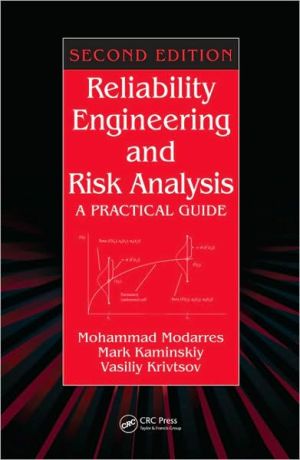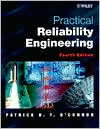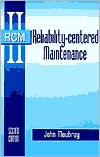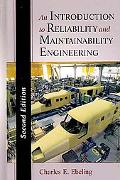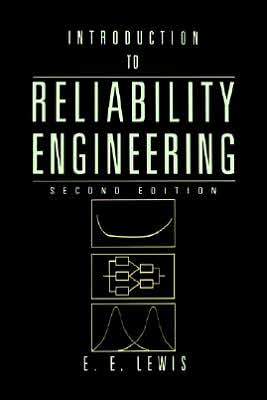Reliability Engineering and Risk Analysis: A Practical Guide, Second Edition
Tools to Proactively Predict Failure\ The prediction of failures involves uncertainty, and problems associated with failures are inherently probabilistic. Their solution requires optimal tools to analyze strength of evidence and understand failure events and processes to gauge confidence in a design’s reliability.\ Reliability Engineering and Risk Analysis: A Practical Guide, Second Edition has already introduced a generation of engineers to the practical methods and techniques used in...
Search in google:
Tools to Proactively Predict Failure The prediction of failures involves uncertainty, and problems associated with failures are inherently probabilistic. Their solution requires optimal tools to analyze strength of evidence and understand failure events and processes to gauge confidence in a design’s reliability.Reliability Engineering and Risk Analysis: A Practical Guide, Second Edition has already introduced a generation of engineers to the practical methods and techniques used in reliability and risk studies applicable to numerous disciplines. Written for both practicing professionals and engineering students, this comprehensive overview of reliability and risk analysis techniques has been fully updated, expanded, and revised to meet current needs. It concentrates on reliability analysis of complex systems and their components and also presents basic risk analysis techniques. Since reliability analysis is a multi-disciplinary subject, the scope of this book applies to most engineering disciplines, and its content is primarily based on the materials used in undergraduate and graduate-level courses at the University of Maryland. This book has greatly benefited from its authors' industrial experience. It balances a mixture of basic theory and applications and presents a large number of examples to illustrate various technical subjects. A proven educational tool, this bestselling classic will serve anyone working on real-life failure analysis and prediction problems.
Chapter 1 Reliability Engineering in Perspective1.1 Why Study Reliability?1.2 Failure Models1.3 Failure Mechanisms1.4 Performance Measures1.5 Formal Definition of Reliability1.6 Definition of Availability1.7 Definition of Risk Chapter 2 Basic Reliability Mathematics: Review of Probability and Statistics2.1 Introduction2.2 Elements of Probability2.3 Probability Distributions2.4 Basic Characteristics of Random Variables2.5 Estimation and Hypothesis Testing2.6 Frequency Tables and Histograms2.7 Goodness-of-Fit Tests2.8 Regression AnalysisChapter 3 Elements of Component Reliability3.1 Concept of Reliability3.2 Common Distributions in Component Reliability3.3 Component Reliability Model Selection3.4 Maximum Likelihood Estimation of Reliability Distribution Parameters3.5 Classical Nonparametric Distribution Estimation3.6 Bayesian Estimation Procedures3.7 Methods of Generic Failure Rate DeterminationChapter 4 System Reliability Analysis4.1 Reliability Block Diagram Method4.2 Fault Tree and Success Tree Methods4.3 Event Tree Method4.4 Master Logic Diagram4.5 Failure Mode and Effect AnalysisChapter 5 Reliability and Availability of Repairable Components and Systems5.1 Repairable System Reliability5.2 Availability of Repairable Systems5.3 Use of Markov Processes for Determining System Availability5.4 Use of System Analysis Techniques in the Availability Calculations of Complex SystemsChapter 6 Selected Topics in Reliability Modeling6.1 Probabilistic Physics-of-Failure Reliability Modeling6.2 Software Reliability Analysis6.3 Human Reliability6.4 Measures of Importance6.5 Reliability-Centered Maintenance6.6 Reliability GrowthChapter 7 Selected Topics in Reliability Data Analysis7.1 Accelerated Life Testing7.2 Analysis of Dependent Failures7.3 Uncertainty Analysis7.4 Use of Expert Opinion for Estimating Reliability Parameters7.5 Probabilistic Failure AnalysisChapter 8 Risk Analysis8.1 Determination of Risk Values8.2 Formalization of Quantitative Risk Assessment8.3 Probabilistic Risk Assessment8.4 Compressed Natural Gas Powered Buses: A PRA Case Study8.5 A Simple Fire Protection Risk Analysis8.6 Precursor AnalysisAppendicesIndex
